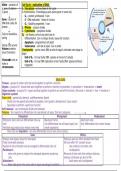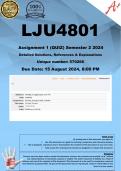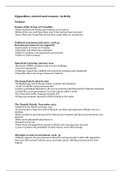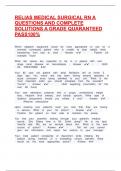Summary
OCR Biology Cell division, diversity and organisation 2.1.6 revision summary - By A* Student
- Institution
- OCR
A revision summary of OCR Biology Cell division, diversity and organisation 2.1.6. Made by a student who achieved A* in A level Biology. Covers all the points within the OCR Biology Specification. Condenses 3 OCR specification books and class notes.
[Show more]






